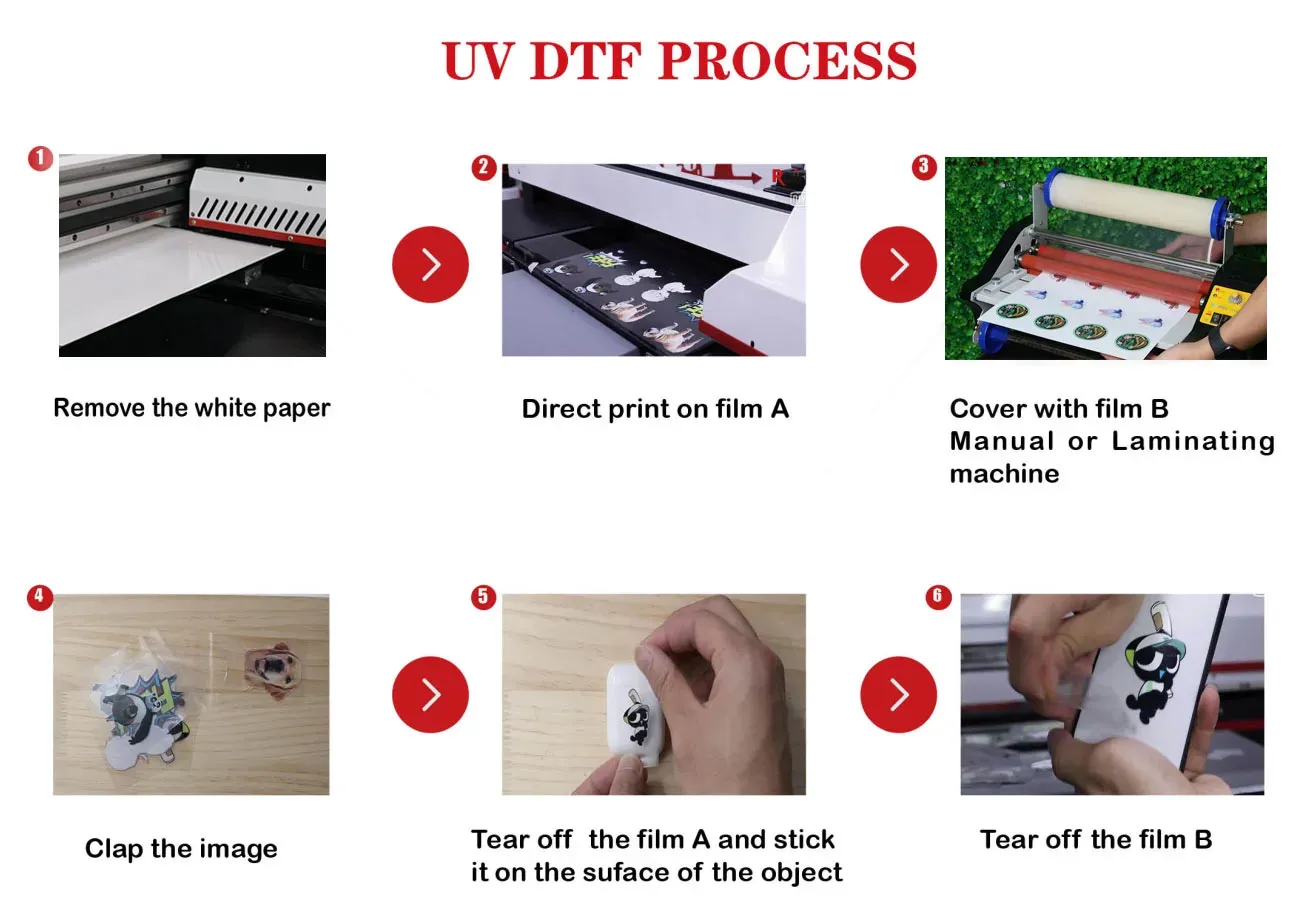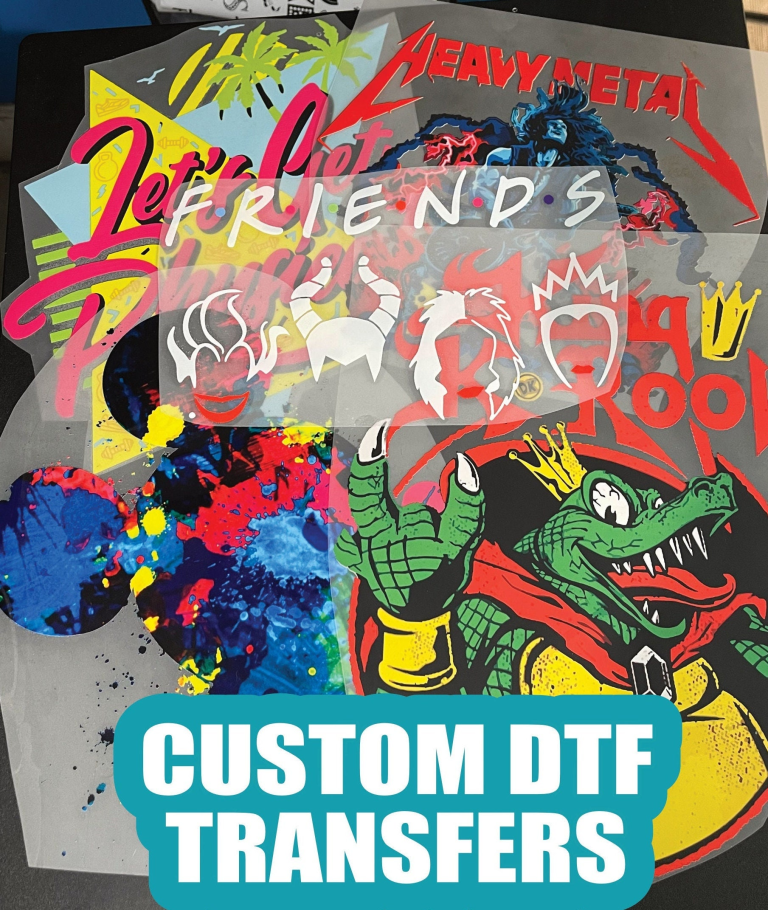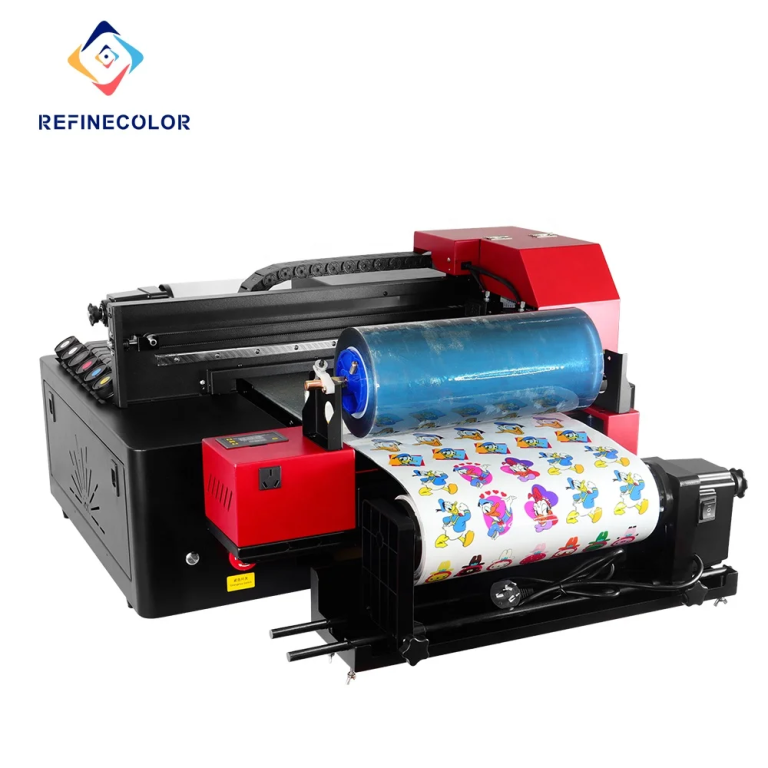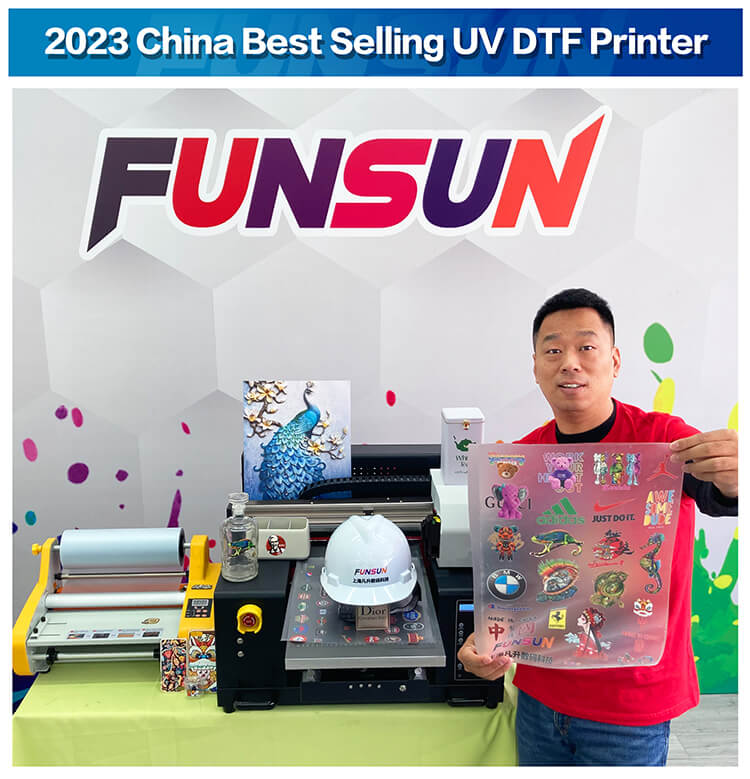UV DTF: The Game Changer in Textile Printing Technology
UV DTF, or UV Direct-to-Film printing, is revolutionizing the textile printing landscape by introducing a groundbreaking technology that employs ultraviolet light to cure inks instantly. This innovative approach not only enhances the quality of fabric prints but also improves durability, making it a preferred choice among manufacturers. As we delve into this topic, we will explore the multifaceted benefits of UV DTF, including its eco-friendly printing capabilities and versatile applications across various materials. With the increasing demand for sustainable and vibrant textile solutions, UV DTF emerges as a game changer that meets these evolving consumer needs. Join us as we uncover how this advanced printing technology is reshaping the future of the textile printing industry.
Also known as UV Direct-to-Film technology, UV DTF printing stands at the forefront of modern textiles, representing an evolution in direct-to-film printing methods. This cutting-edge textile printing technology utilizes UV light to cure inks, allowing for stunning, durable fabric prints that are both vibrant and long-lasting. Environmentally conscious yet effective, UV printing significantly reduces the use of harmful solvents and VOCs, aligning with the growing trend towards eco-friendly printing practices. As businesses strive for efficiency, the instant curing ability of UV DTF allows for rapid production cycles without compromising quality. Overall, this innovative fabric printing technique offers a pathway towards sustainable and efficient textile manufacturing.
Understanding UV DTF Technology
UV Direct-to-Film (DTF) printing technology represents a significant advancement in the realm of textile printing. This method utilizes a combination of UV light and specially designed inks to create vibrant prints on a variety of surfaces. One of the major advantages of UV DTF printing is its ability to cure inks instantly, allowing for an immediate bond between the ink and the fabric. Unlike traditional textile printing methods, which often have long drying times, UV DTF provides a rapid workflow that is ideal for businesses looking to increase efficiency and minimize downtime.
In essence, the UV DTF process begins with the printing of inks onto a specific film. Once the inks are applied, UV light exposure initiates the curing process, solidifying the inks and ensuring their adherence to the material. This innovative approach not only streamlines production but also enhances the printing precision, enabling manufacturers to create intricate designs with ease. Furthermore, the versatility of UV DTF allows it to be effective on a wide array of materials, making it a go-to choice for businesses aiming to cater to various textile needs.
Advantages of UV DTF Printing
The advantages of UV DTF printing are numerous and compelling, particularly for businesses in the textile industry. One of the standout features is the capability to produce high-quality, durable prints that can withstand the rigors of everyday use. The immediate curing process not only locks in the colors but also enhances the print’s resistance to fading, washing, and abrasion. As a result, brands can offer their customers products that not only look stunning but are built to last, significantly boosting customer satisfaction.
Moreover, the eco-friendly attributes of UV DTF printing cannot be overlooked. Many UV inks are formulated with low volatile organic compounds (VOCs), making them a more sustainable option compared to traditional ink solutions. As consumer demand grows for environmentally responsible products, businesses adopting UV DTF technology can appeal to a broader market that values sustainability. By investing in UV DTF, manufacturers are not just improving their product offerings but are also aligning themselves with the ethical standards that modern consumers expect.
Eco-Friendly Benefits of UV DTF
The shift towards eco-friendly solutions is reshaping the textile printing sector, and UV DTF technology stands at the forefront of this movement. Traditional printing methods often rely on inks containing harmful VOCs, contributing negatively to air quality and environmental degradation. In contrast, UV DTF printing employs inks that are safer for both the environment and the workers handling them. This reduction in harmful emissions positions UV DTF as a more responsible choice for manufacturers aiming to lessen their environmental impact.
Furthermore, the eco-friendly nature of UV DTF printing extends beyond just the inks themselves. The efficiency of the printing process, due to its instantaneous curing, also contributes to lower energy consumption and waste production throughout the printing workflow. By utilizing UV DTF technology, textile companies can achieve high-quality outputs while adhering to sustainable practices, satisfying both regulatory requirements and the eco-conscious preferences of today’s consumers.
Market Trends in UV DTF Technology
The adoption of UV DTF printing technology is rapidly gaining traction within the textile industry, propelled by market trends favoring customization and sustainability. As brands look for innovative ways to differentiate their products in a saturated market, the customization capabilities offered by UV DTF technology allow for personalized prints that meet unique customer demands. This flexibility is becoming increasingly important as consumers seek out bespoke apparel and products that reflect their individual styles.
Moreover, the market is witnessing a significant trend towards sustainable printing practices, and UV DTF aligns perfectly with this shift. As public awareness about environmental issues rises, businesses are increasingly required to consider the ecological footprint of their operations. With its low emissions and eco-friendly materials, UV DTF technology not only meets these requirements but also provides a competitive edge for brands committed to sustainability. This dual focus on customization and eco-friendliness ensures that UV DTF remains a pivotal player in the evolving landscape of textile printing.
Production Efficiency with UV DTF
In the highly competitive textile printing industry, production efficiency is paramount. UV DTF printing technology offers a significant advantage in this aspect, dramatically reducing the time required for printing and drying. Thanks to its rapid curing process facilitated by UV light, businesses can expedite their production cycles, allowing them to meet tight deadlines without compromising print quality. This efficiency is particularly beneficial for companies that handle large orders or require quick turnaround times.
Additionally, the streamlined process of UV DTF printing minimizes resource waste, further enhancing productivity. By avoiding the lengthy drying times associated with traditional methods, manufacturers can optimize their workflow and allocate resources more effectively. This boost in production efficiency not only enhances a company’s ability to fulfill larger and more varied orders but also improves profitability by reducing operational costs, showcasing why UV DTF is a game changer in textile printing technology.
The Future of UV DTF in the Textile Industry
The future of UV DTF technology in textile printing looks promising, with advancements in equipment and applications on the horizon. As businesses continue to embrace automation and innovation, the development of larger-format UV DTF printers is particularly noteworthy. These machines are designed to support the increasing demand for high-volume production, allowing companies to scale their operations effectively. Brands like Mimaki and Roland DG are at the forefront of these advancements, creating user-friendly systems that simplify the adoption of UV DTF for various market segments.
Moreover, as consumer preferences evolve, the textile industry is likely to see an uptick in demand for custom and sustainable printing solutions. UV DTF printing provides a compelling response to these trends, combining customization capabilities with eco-friendly practices. As more brands recognize the value of investing in sustainable technologies, the adoption of UV DTF will likely accelerate, positioning it as a key player in the future landscape of the textile printing industry.
Frequently Asked Questions
What is UV DTF printing and how does it differ from traditional textile printing technology?
UV Direct-to-Film (DTF) printing is an innovative textile printing technology that uses ultraviolet light to cure inks instantly, allowing for immediate adhesion to fabrics. Unlike traditional printing methods that require extended drying times, UV DTF delivers faster turnaround and superior durability, making it a favored choice for modern textile manufacturers.
What are the advantages of using UV DTF in eco-friendly printing?
UV DTF printing is considered an eco-friendly printing method because it employs inks with low volatile organic compounds (VOCs), significantly reducing its environmental impact compared to traditional textile printing methods. This aligns with the growing consumer demand for sustainable printing practices.
How does UV DTF printing ensure durability in fabric prints?
The UV DTF printing process utilizes UV light to cure inks immediately, resulting in prints that are not only vibrant but also highly resistant to fading, scratches, and washing. This unmatched durability helps brands maintain product quality and customer satisfaction over time.
What materials can be used with UV DTF printing technology?
One of the standout features of UV DTF technology is its versatility, allowing it to print on a variety of materials including cotton, polyester, synthetic blends, and more. This adaptability makes UV DTF suitable for custom apparel, promotional products, and home textiles, catering to diverse market needs.
How does UV DTF printing improve production efficiency?
With its immediate curing time, UV DTF printing accelerates production processes, enabling businesses to fulfill orders quickly without compromising quality. The fast turnaround time enhances overall productivity, making it ideal for companies that operate under tight deadlines.
What trends are emerging in the UV DTF printing market?
The UV DTF printing market is experiencing significant growth, driven by recent innovations in printing technology and increased demand for sustainable solutions. Brands are increasingly focusing on customizable and eco-friendly options, leading to new advancements like larger-format printers that cater to commercial production needs.
| Key Points | Description |
|---|---|
| Introduction | UV Direct-to-Film (DTF) printing is revolutionizing the textile industry, offering immediate curing of inks for superior print quality. |
| Versatility in Material Capability | Can print on various materials including cotton, polyester, and blends, suitable for custom apparel and textiles. |
| Exceptional Durability and Quality | Offers vibrancy, scratch resistance, and longevity, fulfilling customer demands for durable products. |
| Eco-Friendly Printing Alternatives | Utilizes low VOC inks making it a sustainable option in the textile industry. |
| Efficiency and Speed in Production | Immediate curing times accelerate production and improve order management to meet tight deadlines. |
| Current Market Trends | Growing interest in UV DTF technology among brands due to its custom and sustainable printing capabilities. |
| Recent Innovations | Advancements in larger-format printers simplify processes for small and medium enterprises. |
| Industry Adoption and Future Outlook | Recognition of cost-effectiveness and quality by brands signals a strong trend towards UV DTF technology. |
Summary
UV DTF printing is a revolutionary advancement in textile manufacturing that combines efficiency, versatility, and sustainability. By utilizing ultraviolet light to cure inks immediately, this technology allows for high-quality printed fabrics that are durable and vibrant. In a time where businesses prioritize eco-friendly practices, UV DTF stands out due to its low VOC inks, catering to environmentally-conscious consumers. As the industry evolves and adoption rates increase due to competitive benefits and technological advancements, UV DTF is poised to redefine the future of fabric printing, making it an essential consideration for manufacturers aiming to stay ahead in the market.







